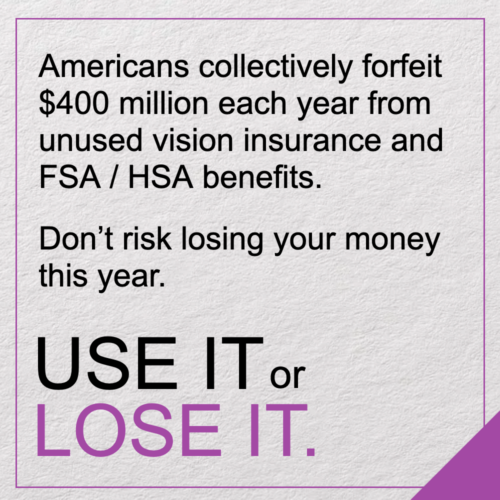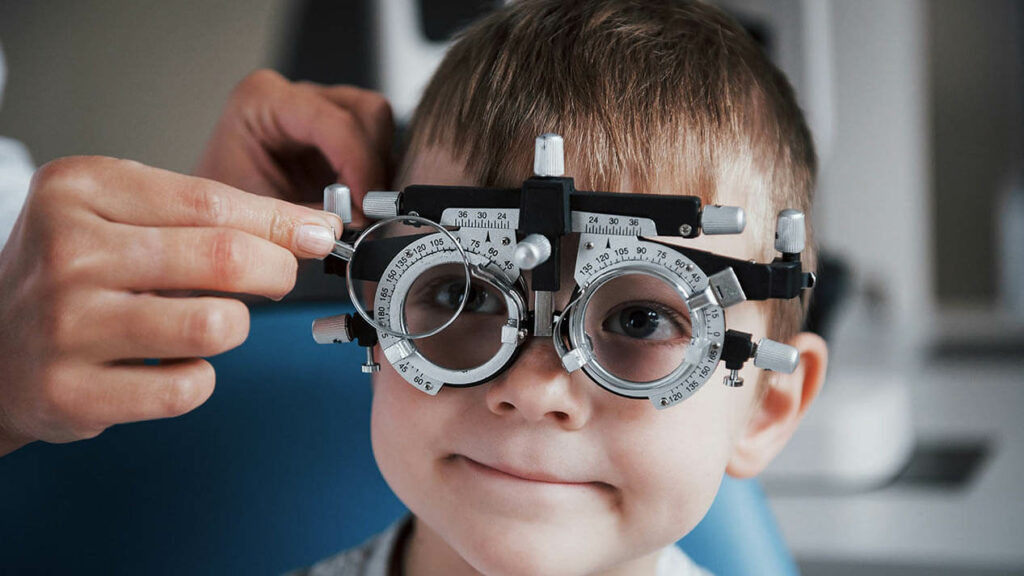As the back to school year kicks off, parents are often busy preparing their children with new supplies, clothes, and schedules. However, one crucial preparation that is sometimes overlooked is scheduling a comprehensive eye exam. According to the American Optometric Association (AOA) and the American Academy of Ophthalmology (AAO), regular eye exams are vital for children’s health and academic success. Early detection and consistent monitoring of vision issues can significantly impact a child’s development and learning experience.
Why Are Children’s Eye Exams Important?
Children’s vision is closely linked to their learning and development. According to the AOA, approximately 80% of learning occurs through visual tasks. This includes reading, writing, and using digital devices. If a child is struggling with undiagnosed vision issues, it can affect their ability to perform well in school and participate in activities.
The AAO and AOA recommend that children receive their first comprehensive eye exam at six months of age, followed by another exam at three years old, and just before starting school. After that, eye exams should continue regularly, about every one to two years, or more frequently if the child has existing vision problems.
The Best Time for Eye Exams: Back to School Season
The start of the school year is an ideal time for children to have their eyes examined. During this time, eye care providers can ensure that any vision issues are identified and managed before they impact the child’s school performance. Vision problems like nearsightedness, farsightedness, and astigmatism can easily go unnoticed by parents and teachers, but they can cause significant difficulties in the classroom.
Early detection is critical. When vision issues are caught early, treatments such as prescription glasses, vision therapy, or other interventions like myopia management can be implemented to help the child see clearly and comfortably. Without these necessary corrections, a child may experience blurry vision, eye strain, double vision, and even behavioral issues due to their inability to see well.
The Back to School Statistics: Vision Problems in Children
The statistics around vision problems in children are alarming. The AOA reports that approximately 25% of school-aged children have a vision problem that could affect their learning. Unfortunately, many of these children are not diagnosed until they begin to struggle in school. Undiagnosed and untreated vision issues can lead to poor academic performance, a decrease in self-esteem, and other long-term effects on a child’s development.
Vision screenings at school are not enough to catch all vision problems. While these screenings can detect some issues, they often miss more subtle problems, such as binocular vision disorders or focusing problems. A comprehensive eye exam conducted by an optometrist is the most effective way to diagnose and treat these issues.
What to Expect During a Children’s Eye Exam
During a children’s eye exam, the eye care provider will conduct a series of tests to assess the child’s vision and eye health. These tests typically include:
- Visual Acuity Test: This test measures how clearly a child can see at different distances. It usually involves reading letters or symbols on an eye chart.
- Subjective Refraction Test: This test determines the child’s prescription for glasses or contact lenses by measuring how light bends as it passes through the eye.
- Binocular Vision Test: This test assesses how well the child’s eyes work together as a team. Poor binocular vision can cause problems with depth perception, reading, and other visual tasks.
- Eye Health Examination: The eye doctor will examine the child’s eyes for signs of eye diseases or conditions. This may involve using special lights or lenses to look inside the eye.

The Impact of Undiagnosed Vision Issues
Undiagnosed vision problems can have a profound impact on a child’s life. For example, a child with undiagnosed nearsightedness may struggle to see the board in the classroom, leading to frustration and a lack of engagement in school. Similarly, a child with a focusing problem may have difficulty reading, leading to poor academic performance.
In some cases, undiagnosed vision issues can also lead to behavioral problems. A child who is struggling to see may act out in frustration or may be incorrectly labeled as having ADHD or attention issues when the root cause is actually a vision problem. Often times, when the vision issue is corrected, some of these children become all-star student overnight.
Preventing Vision Problems Through Early Detection
The key to preventing the negative effects of vision problems is early detection and consistent monitoring. By scheduling regular eye exams, parents can ensure that any vision issues are caught and treated before they impact the child’s life.
In addition to regular eye exams, there are steps parents can take to protect their child’s vision:
- Encourage Healthy Screen Time Habits: With the increasing use of digital devices in schools and at home, it’s important to encourage children to take regular breaks from screens to prevent eye strain.
- Promote Outdoor Activities: Spending time outdoors has been shown to reduce the risk of developing nearsightedness in children.
- Teach Proper Eye Care: Teaching children to wash their hands before touching their eyes and to avoid rubbing their eyes can help prevent eye infections and other issues.
The Role of Schools in Children’s Eye Health
Schools also play a vital role in promoting children’s eye health. While school vision screenings are not a substitute for a comprehensive eye exam, they can help identify children who may need further evaluation. Schools can also educate parents about the importance of regular eye exams and encourage them to schedule exams for their children.
Prioritize Children’s Eye Health During Back to School
Remember, regular eye exams are a crucial part of a child’s health care back to school routine. With approximately 25% of school-aged children experiencing vision problems, it’s important to be proactive in detecting and treating these issues. By doing so, parents can help their children achieve their full potential both in and out of the classroom.
As children head back to school, it’s essential to prioritize their eye health. By scheduling a comprehensive eye exam, parents can help ensure that their child’s vision is not a barrier to their success in the classroom. Early detection of vision problems can lead to timely treatment and prevent long-term issues that could affect the child’s academic performance and overall well-being.
At Optical Illusions, we are proud to offer a wide range of pediatric eye care services, including myopia management treatments. Contact our team to schedule your appointment at 1 of our 4 conveniently located offices.




